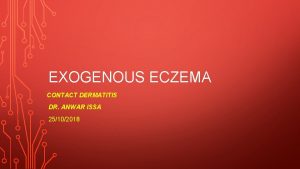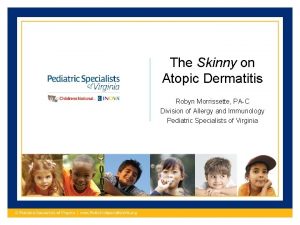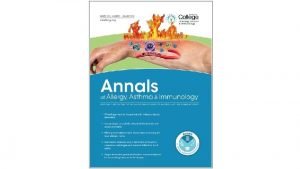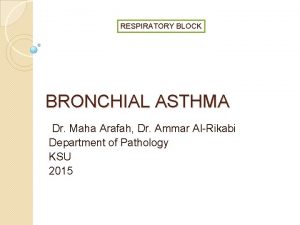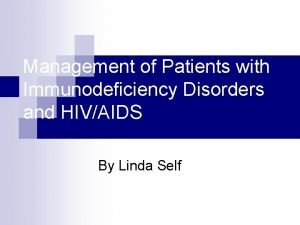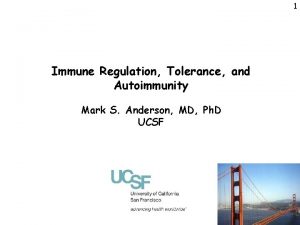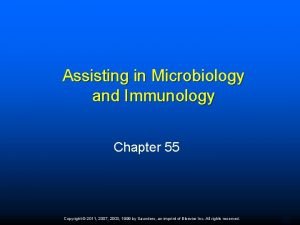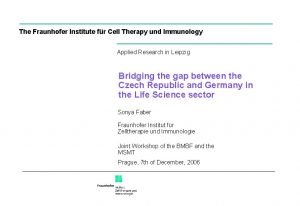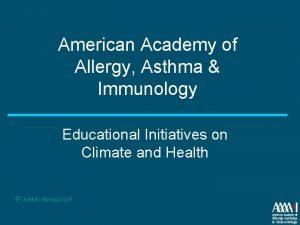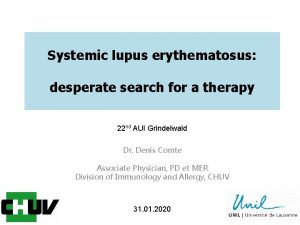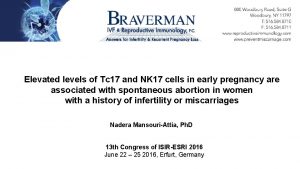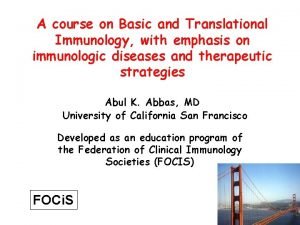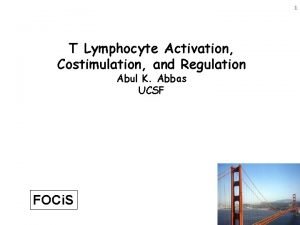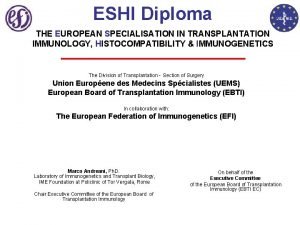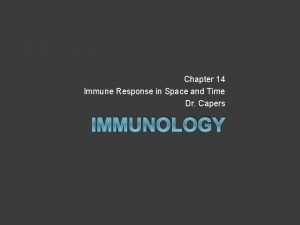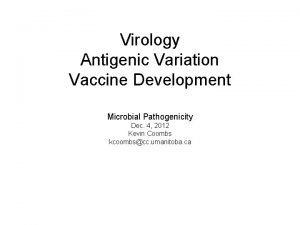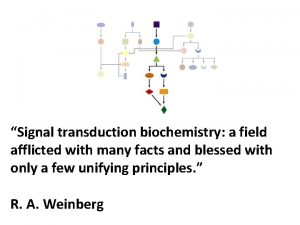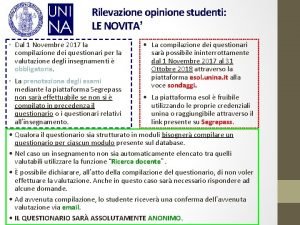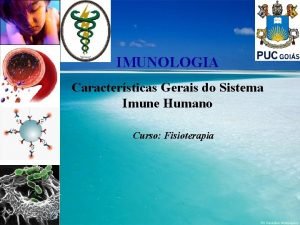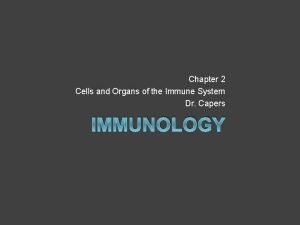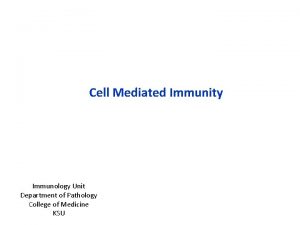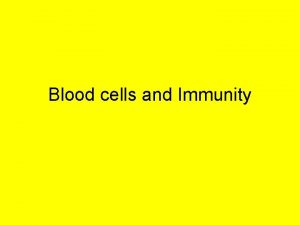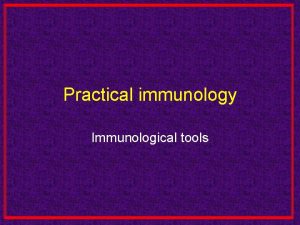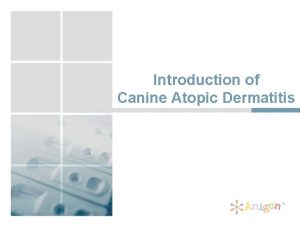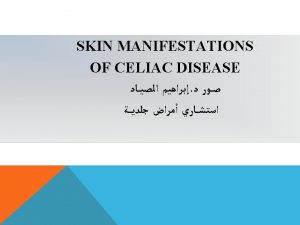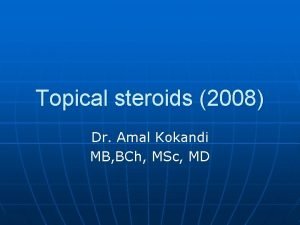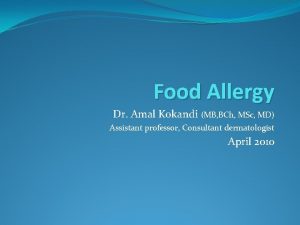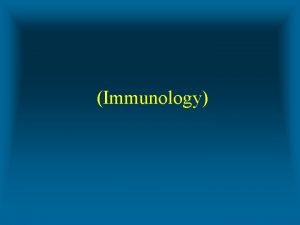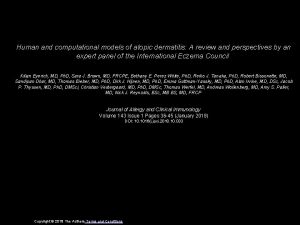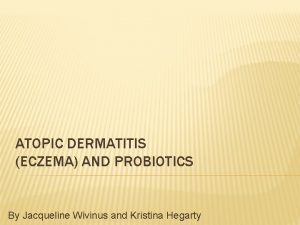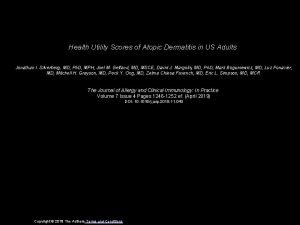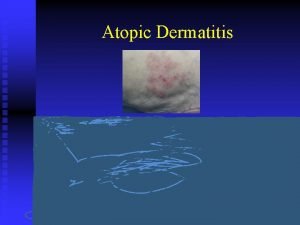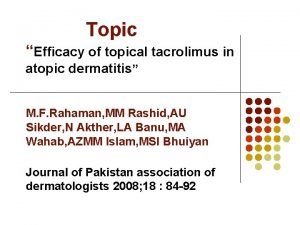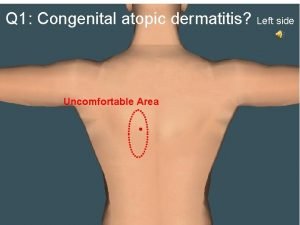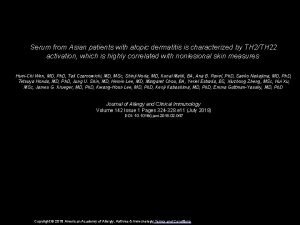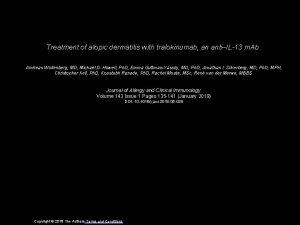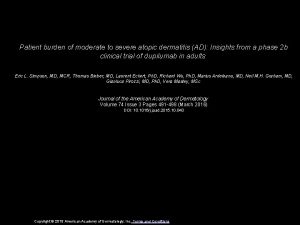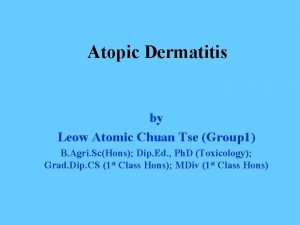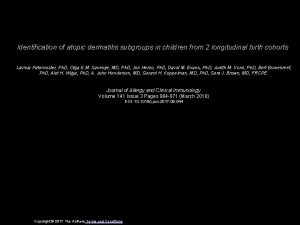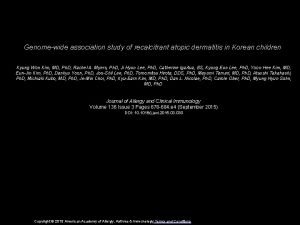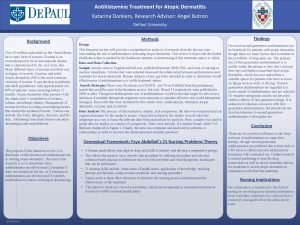Atopic Dermatitis Immunology and management Dr Amal Kokandi






























- Slides: 30

Atopic Dermatitis: Immunology and management Dr Amal Kokandi (MBBCh, DDSc, MD)

ECZEMA n Synonymous with dermatitis n Large proportion of skin disease in developed world n 10% of population at any one time n 40% of population at some time

Features of eczema n n n n Itchy Erythematous Dry Flaky Oedematous Crusted Vesicles lichenified

Diagnosis n Clinical n No specific laboratory test n Family history of atopy is helpful n Criteria for research studies: Hanifin & Rajka (1980), United Kingdom Party Criteria (1994)

Severity n Clinical: Extent, sleep disturbance, Itching, Quality of life. – ADASI (diagramatic), SASSAD, SIS (intensity scoring), etc n Biophysical methods: – Eosinophils – Ig. E (80%) – Immunological markers (s. IL-2 R, ECP, s. CD 23, s. ICAM-1, s. ELAM-1, s. VCAM-1, E selectin, MBP…. . )

Atopic eczema n Endogenous n Atopic i. e asthma, hay fever n 5% of population n 10 -15% of all children affected at some time

Exacerbating factors n Detergents n Infection n Teething n Stress n Cat and dog fur n ? ? House dust mite n ? ? Food allergen

Clinical features n Itchy erythematous scaly patches n Flexures of knees and elbows n Neck n Face in infants n Exaggerated skin markings n Lichenification n Nail – pitted ridged






complications n Bacterial infection n Viral infections – warts, molluscum, herpes n Keratoconjunctivitis n Retarded growth

Pathogenesis n n n n Not fully understood Genetics Environmental factors: Irritants, aeroallergens, seasonal, hormonal and stress Microbial organisms (Staph Aureus, Malassezia, skin fungi. ) and superantigens Modified skin barrier function Deficiency in innate immune system and toll like receptors Specific immunity (biphasic Th 1 & Th 2)

Genetics of atopic eczema n 77% & 15% concordance in mono- & dizygotic twins. n significant linkage on chromosomes 1 q 21, 3 q 21 , 3 q 24 -22 , 3 p 26 -24 &17 q 25 n polymorphisms in genes important for epidermal differentiation, inflammation (IL-4, IL-12, Fillagrin…. )

investigations n Clinical n ? ? Ig. E n ? ? RAST

Prognosis n Most grow out of it! n 15% may come back – often very mildly

Treatment n n n n Patient education Emollients Avoid triggering factors: irritants especially soap Topical steroids Treat infections Sedating antihistamines Second line agents: Calcineurin inhibitors, UV therapy and systemic therapy Immunotherapy: Desensitization

creams n Cosmetically n Water more acceptable based n Contain preservatives n Soap substitutes

ointments n Oil based n Don’t contain preservative n Feel greasy n Good for hydrating

Topical steroids potency (European) n Mild – “hydrocortisone” n Moderate – “eumovate” n Potent – “betnovate” n Very potent – “dermovate”

Topical steroid potency (American) n Class 1 (superpotent) n Class 2 (potent) n Class 3 (potent) n Class 4 (midstrength) n Class 5 (midstrength) n Class 6 (mild) n Class 7 (least potent)

FTU n Finger tip unit n Helps to give estimation of topical steroid amount used n To avoid over and under use of steroid

FTU

Finger tip unit 2 FTU = nearly 1 gram n Enough for twice size of adult hand n – – – – A hand fingers (front and back) = 1 FTU A foot (all over) + 2 FTU Front of chest and abdomen = 7 FTU Back and buttocks = 7 FTU Face and neck = 2. 5 FTU An entire arm and hand = 4 FTU An entire leg and foot = 8 FTU

Special considerations n Face n Intertriginous areas n Children n Effect of occlusion n infections and combination formulas (with antibiotics and antifungals)

Topical steroid side effects n Perioral dermatitis and rosacea n Tachyphylaxis & steroid addiction n Infections (tinea incognito, herpes simplex, pityriasis versicolor, scabies……) n Adrenal suppression n Glucoma and cataract n Angina bullosa purpura (hard palate)

Topical steroid side effects § § § § Telangiectasia, purpura, epidermal, dermal and subcutaneous atrophy, striae, psuedoscars…… Folliculitis Allergic reactions Hypopigmentation Hypertrichosis Delayed wound healing Alteration in skin elasticity & mechanical properties tinea incognito

 Dermatitis atopica icd 10
Dermatitis atopica icd 10 Dr. morrissette
Dr. morrissette Hanifin rajka atopic dermatitis
Hanifin rajka atopic dermatitis Atopic dermatitis yardstick
Atopic dermatitis yardstick Atopic dermatitis pathophysiology
Atopic dermatitis pathophysiology Complications of asthma
Complications of asthma Non atopic asthma
Non atopic asthma Nursing management of dermatitis slideshare
Nursing management of dermatitis slideshare Central tolerance and peripheral tolerance
Central tolerance and peripheral tolerance Assisting in microbiology and immunology
Assisting in microbiology and immunology Fraunhofer institute for cell therapy and immunology
Fraunhofer institute for cell therapy and immunology American academy of allergy asthma and immunology 2018
American academy of allergy asthma and immunology 2018 History of immunology
History of immunology Antigen antibody
Antigen antibody Systemic lupus erythematosus
Systemic lupus erythematosus Braverman reproductive immunology
Braverman reproductive immunology Cells
Cells Abbas basic immunology
Abbas basic immunology Eshi diploma
Eshi diploma Pcams immunology
Pcams immunology Baltimore classification
Baltimore classification Nature reviews immunology
Nature reviews immunology Journal of experimental medicine
Journal of experimental medicine Molecular immunology ppt
Molecular immunology ppt Trends in immunology
Trends in immunology Nature reviews immunology
Nature reviews immunology Pals immunology
Pals immunology Kuby immunology
Kuby immunology Tumor immunology
Tumor immunology Nature reviews immunology
Nature reviews immunology Avidity in immunology
Avidity in immunology
